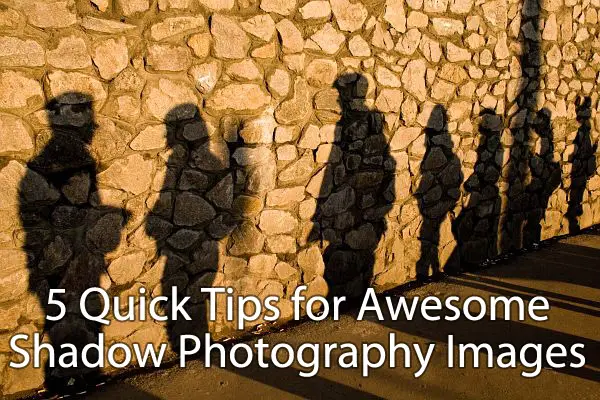Shadow photography is a simple, yet effective way to create stunning images of just about any subject. All you need to get started in shadow photography is a light source and a subject who casts a shadow – that’s it!

If you are interested in trying out shadow photography, here are some tips to get you started:
1. Look down, not ahead
In general, you are going to find shadows on the ground or against walls and other surfaces. This requires a bit of a different approach, since as photographers we tend to look around, not down, to compose images. So the next time you are out with your camera try to remind yourself to actively look for shadows and see what you find.
2. Wait for dramatic light
The best shadows are created by light that is lower on the horizon, which creates strong, long, and dramatic shadows. You’re generally going to find this type of light outdoors closer to sunrise and sunset, when the sun is lower in the sky (rather than directly above you. If you are photographing indoors you can use a lamp without the shade to create a strong light source, which will result in strong shadows. The closer your light source is to the ground (or to the level the shadow-casting object is, such as on a table), the longer of a shadow you will end up with.
3. Include the subject or not?
Whether to include the subject within the photo or not is a personal choice and primarily depends on the type of image you want to create. Including the subject tells the viewer who the photo is about, while leaving the subject out tends to add more mystery as the viewer will be guessing who or what is casting the shadow. You can try both approaches; then decide which result creates a better final image.
4. Look for patterns
Images that combine shadows and patterns can turn out very dramatic – so keep an eye out for any patterns and shadows that you can capture on camera. Patterns exist everywhere, so it’s just a matter of being aware of them and identifying photographic opportunities. Some great examples include power lines, rock formations, buildings, birds, bugs, flowers, etc.
5. Get inspiration
If you’re not sure what you can “do” with shadows and photography, check out some online photo galleries of shadow photography, particularly the work of Alexey Bednij, who has created powerful, dynamic images using shadows and patterns. By viewing what others have created using shadows, you can get a better idea of what types of shadows to look for and how you should approach the scene to capture it on camera.
Final tip: As long as you are comfortable using it, try to capture shadow images using manual mode, which give you more control over the exposure. The automatic exposure meter on most cameras will attempt to “lighten” the shadows, resulting in an overexposed image.
Do you have any tips for taking great shadow photos? Please share!









0 comments